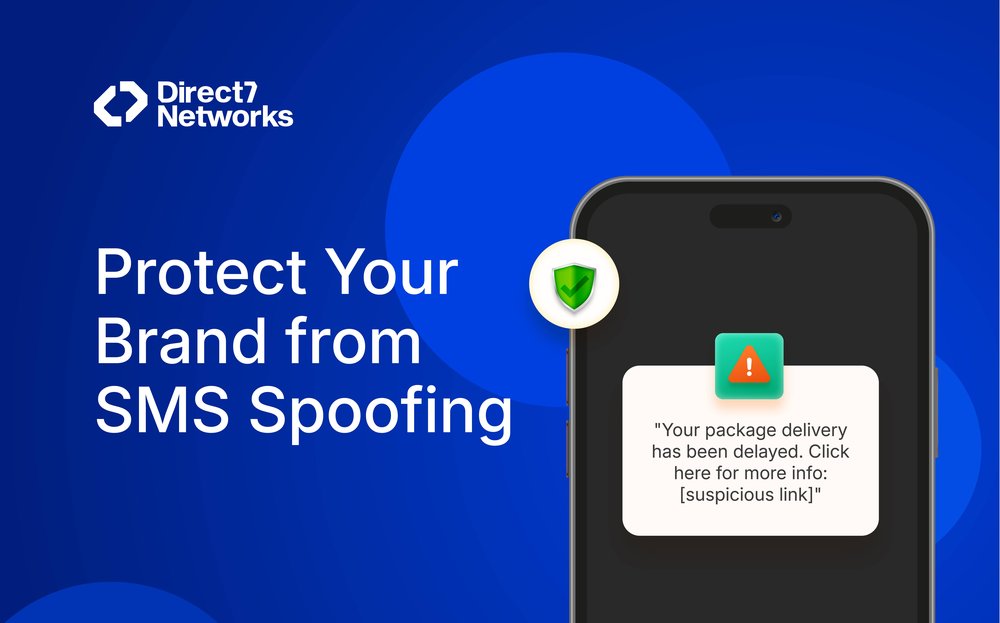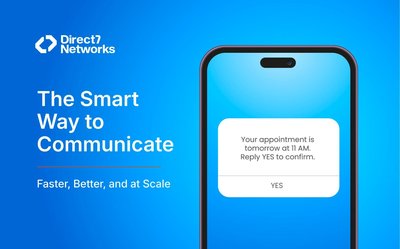
How to stop SMS Spoofing: What Businesses Need to Know
Cybercriminals are constantly finding new ways to deceive people, and SMS spoofing is a major threat to both businesses and individuals. To prevent SMS spoofing, companies need to understand how fraudsters change sender IDs to impersonate trusted organizations, leading to security risks and financial losses. Falling for an SMS spoof can result in identity theft, financial fraud, ransomware attacks, and even major security breaches that harm businesses and customers. Knowing how SMS spoofing works and how to stop it is crucial. This guide will explain the risks, its impact on businesses, and the best ways to protect your communications to effectively prevent SMS spoofing.
Understanding SMS Spoofing: What It Is and Why It Matters
SMS Spoofing is a technique where fraudsters alter the SenderID of a message to make it appear as though it’s from a trusted source. Unlike hacking, spoofing exploits the SMS protocol’s lack of authentication, allowing attackers to deceive individuals into divulging sensitive information.
Real-Life Example of SMS Spoofing
A recipient may receive a message from what appears to be their bank:
"Your account has been compromised. Click here to secure it."
Believing the message is legitimate, they may unknowingly share confidential details, leading to financial fraud.
How Does SMS Spoofing Work?
Fraudsters use unauthorized SMS APIs or third-party services to modify the SenderID of messages. This allows them to impersonate legitimate businesses, banks, or government agencies to extract sensitive data from unsuspecting recipients.
Common Methods Used in SMS Spoofing:
SenderID Manipulation – Attackers modify the sender name to appear as a trusted entity.
Phishing Links – Fraudulent links redirect users to fake websites that steal login credentials.
Malicious Attachments – Some spoofed messages contain malware-laden files.
Business Impersonation – Fraudsters mimic internal corporate communication to deceive employees.
Different Types of SMS Spoofing Attacks
Brand Impersonation – Messages appear to be from well-known businesses, tricking users into sharing credentials.
Banking Fraud – Fake banking alerts encourage recipients to enter personal information.
Government Scams – Fraudsters pose as tax agencies or law enforcement to demand payments.
Internal Spoofing Attacks – Cybercriminals impersonate executives to manipulate employees.
Smishing vs. SMS Spoofing: What’s the Difference?
SMS Spoofing is the act of forging sender IDs, while Smishing (SMS phishing) involves sending fraudulent messages to trick recipients into taking harmful actions, such as clicking malicious links.
| Feature | SMS Spoofing | Smishing |
| Alters sender ID | Yes | No |
| Uses deceptive content | Yes | Yes |
| Includes phishing links | Sometimes | Often |
| Targets businesses | Yes | Yes |
Impact of SMS Spoofing on Businesses
Erosion of Customer Trust – Victims may blame businesses for spoofed messages.
Financial & Data Loss – Spoofing can lead to fraud, causing financial and reputational damage.
Legal & Compliance Risks – Businesses that fail to secure their SMS channels may face regulatory penalties.
Brand Reputation Damage – Repeated spoofing incidents can undermine credibility.
How Businesses Can Stop SMS Spoofing
- Partner with a Trusted SMS Provider – Use secure SMS APIs with authentication mechanisms.
- Implement Sender ID Protection – Register official sender IDs to prevent misuse.
- Enable Two-Factor Authentication (2FA) – Require extra verification for sensitive transactions.
- Educate Customers & Employees – Conduct awareness programs to identify spoofing attempts.
- Monitor & Analyze SMS Traffic – Use analytics tools to detect anomalies in messaging patterns.
Tips for Choosing a Secure SMS Provider to Stop Spoofing Attacks
Choose an SMS provider that ensures secure and reliable SMS communication by providing:
Verified SMS API – The SMS services that prevent unauthorized SenderID alterations.
Sender ID Registration – Top-notch customer support for businesses to register and secure their official sender IDs.
Regulatory Compliance – Align with industry standards like GDPR and TCPA to ensure lawful messaging practices.
Stay Secure with D7 Networks
As SMS fraud evolves, staying proactive is key. Partner with D7 Networks to prevent SMS spoofing and protect your business from modern threats.
Need help securing your SMS communication? Contact our experts today to get started.



